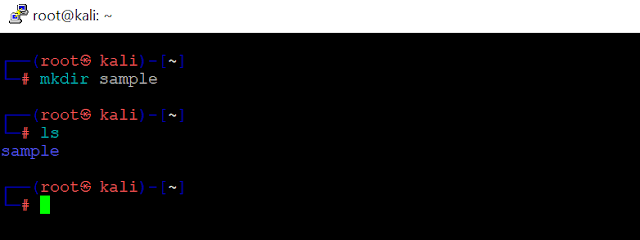Complete Guide for Learners and Professionals
The rmdir command in Linux is a straightforward yet essential tool for managing directories. It is specifically designed to remove empty directories only. While it may seem basic at first glance, understanding its use cases, options, limitations, and integration with other commands can significantly enhance your Linux command-line proficiency.
What is rmdir?
rmdir stands for Remove Directory. It is used to delete empty directories from the Linux file system. Unlike rm -r, it does not remove directories that contain files or subdirectories, making it a safer and more cautious choice in many situations.
Syntax:
rmdir [OPTION]... DIRECTORY...Examples of rmdir Usage
1. Removing a Single Empty Directory
mkdir sample
rmdir sample
Explanation: mkdir creates a new directory named sample. rmdir then removes it because it is empty.
2. Attempting to Remove a Non-Empty Directory
mkdir myfolder
touch myfolder/file.txt
Explanation: touch creates an empty file inside myfolder.
rmdir myfolder
rmdir will fail with an error since the directory is no longer empty.
3. Removing Nested Empty Directories
mkdir -p a/b/c
Explanation: mkdir -p creates parent and child directories.
rmdir -p a/b/c
Explanation:rmdir -p removes c, b, and a, but only if all are empty.
⚙️ Switches (Options) of rmdir
| Switch | Description |
|---|---|
-p |
Removes the specified directory and its parent directories (if empty) |
--ignore-fail-on-non-empty |
Silently ignores the error if a directory is not empty (not standard in all distros) |
--verbose or -v |
Shows a message for each directory removed (on supported systems) |
Scenarios with Each Switch
Using -p (Parent Directory Removal)
mkdir -p logs/archive/2024
rmdir -p logs/archive/2024Explanation: Removes 2024, archive, and logs only if all are empty.
Using --verbose or -v
mkdir mydir
rmdir -v mydirOutput: rmdir: removing directory, 'mydir'
Using --ignore-fail-on-non-empty
mkdir example && touch example/file.txt
rmdir --ignore-fail-on-non-empty exampleNote: No error message shown; directory remains.
Caution While Using rmdir
- It only works on empty directories.
- Trying to remove a non-existent directory will return an error.
- Recursive deletion is not supported; use
-ponly for empty nested directories. - Not all switches (e.g.,
--verbose) are universally supported on every Linux distro.
Alternative Commands
❌ Using rm -r for Non-Empty Directories
rm -r myfolder
Warning: Removes myfolder and all its contents recursively. Use cautiously.
Using find to Delete All Empty Directories
find . -type d -empty -deleteTip: Recursively finds and deletes all empty directories from the current directory.
| Read About Find Command |
|---|
| Find - |
🧠 Tips for Effective Usage
- Check if a directory is empty:
ls -A directoryLists all contents, including hidden files. If nothing is listed, it’s empty.
for dir in */; do rmdir "$dir" 2>/dev/null; doneTries to remove all top-level empty directories and suppresses errors.
find . -type d -empty -deleteIdeal for cleaning projects or backups without risking data loss.
Summary
rmdir is a simple but vital command for maintaining clean directory structures in Linux. While limited to empty directories, its options like -p and -v offer added control. In scenarios requiring more power (like deleting non-empty folders), alternatives like rm -r or find ... -delete should be used carefully.
Whether you're writing scripts, cleaning up after builds, or managing servers, mastering rmdir helps you stay precise and efficient on the command line.
Keywords: rmdir, Linux, remove directory, bash, terminal, empty folder, command line tools, scripting, system maintenance
